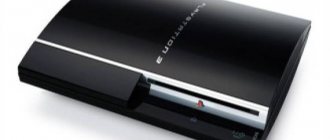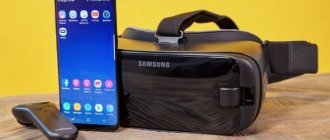Description
Playstation VR is a device that allows you to get new sensations from video games. The immersion with the help of a helmet is so realistic that it seems as if you are a direct participant in all the actions and personally go through quests, explore locations, and fight enemies.
PS VR first became known in 2014 when the press reported that Sony was working on a VR helmet for the Playstation 4 console. The company later confirmed this, saying that it would soon release a product codenamed Project Morpheus.
The device from Sony can easily be considered the most inexpensive representative of the “Big Three” and the only option for console players. Previously, separately from the PS4 virtual helmet itself, you had to purchase a capture camera to track movements in space and PS Move joysticks to control processes in the video game.
In 2020, version 2 was released and the PS Camera was already included.
Now the entire set, except for the controllers, will have to be purchased separately for 5,000 rubles, you can buy it for 25,000 rubles, plus five video games are included in the kit. The total is 30,000 rubles. But even with all the equipment, PS VR is much more profitable than competitors like Oculus or HTC.
Advantages and disadvantages
Flaws:
- An incredible amount of wires;
- Spatial tracking does not work as well as we would like - the device has an unstable response;
- Poor resolution compared to other helmets;
- The last problem follows from the previous one - due to poor graphics, the owner’s well-being worsens.
Positive sides:
- Lowest cost among other gadgets in the VR segment;
- The headset is close to the performance of other helmets;
- New user experience is guaranteed;
- Large selection of games - Sony has adapted several projects for glasses. All video games that run on competitors' headsets from the Steam library run perfectly on PS VR.
Samsung Gear VR 2020 — $99 (about 7,000 rubles)
Today's best VR glasses for smartphones. Compact, convenient, inexpensive (and sometimes even free when included with a new smartphone). One problem: they work exclusively with devices from the Samsung Galaxy family.
Samsung Gear VR succinctly brings to mind the idea of Google Cardboard. This is still the same “holder” for a mobile phone, but of high quality - with a comfortable 96-degree viewing angle and sensors that track the position of the head. Gear VR is equipped with touch controls on the side of the body. It’s comfortable to watch videos and run an extensive collection of simple games. Since phones have limited resources, you won't see breakthrough graphics on the Gear VR (at least not yet).
Advantages:
- adequate combination of price and quality (you can get it for free!);
- suitable for casual games and 3D video;
- does not require wires.
Flaws:
- Works only with the Samsung Galaxy line;
- gets very hot;
- For full gaming you need a gamepad.
Suitable for: owners of flagship Samsung models (especially those who pre-ordered them) and fans of 3D videos. Home cinema at the tip of your nose.
Helmet capabilities
If you are sure that you can only run video games on a Sony helmet, then you are very mistaken. Here you can watch videos and films, get acquainted with the functions of the helmet using VR World and Playroom, as well as use services (for example, YouTube), and other interesting things.
Play in virtual reality
The main function of the glasses is, of course, to launch specially adapted projects. At the start there were few of them, but every year the library is replenished. Before launching video games, we recommend that you get comfortable with the new virtual reality format for you.
Playroom VR is a free demo of the camera capture feature. It is a collection of mini-games that allows you to get a completely new experience. Here you can play with friends, who are also happy owners of the PlayStation Viar. At your disposal are 6 adventures that will give you an unforgettable experience.
VR World is another collection that perfectly highlights every facet of the headset's capabilities. There are even leaderboards around the world. The user is offered to try the full version of five games, namely:
- “Dangerous Dive” is a kind of diver simulator, where there is a place for a thriller and exciting gameplay. The detailed underwater world will please the eye.
- The whole plot quest “The London Job” invites you to try on the role of a dangerous authority in the criminal world. Try to survive and undergo a tough interrogation, during which you will have to make a serious decision.
- The mini-project with the deceptive name “ VR Sleigh” will not take you back to childhood by giving you the opportunity to ride down a snowy mountain. This is a dynamic street race where you will maneuver in traffic and drive through dangerous obstacles with just a glance.
- Cruel Intentions , also known as Win or Die, will literally force you to replay the game over and over again until you achieve perfection and win the competition.
- And finally, “A Space Odyssey” will immerse gamers in a dangerous space environment, where they will have to travel on an alien ship and face enemies. The main goal is to find the oldest artifact.
Watching movies and videos
By connecting your helmet to the Curling Iron, you can watch videos from YouTube, broadcasts from Twitch, or TV series through online cinemas. Also, it is not prohibited to open pirated films and run them through a regular search engine.
Only everything does not work as perfectly as we would like: videos on YouTube, which, in theory, should be played in 360-degree format, do not show a very high-quality picture. Users note that the field of vision turned out to be narrow, and much worse than in video games. The image seems to go somewhere to the side, appearing in the opposite direction from the view.
What can't be said about paid services like Netflix - here Sony tried and adapted movies for a VR helmet. The screen changes in size and is customized individually for the user. The feeling is the same as after visiting a 3D cinema in the first row - only it is not clear what you paid money for, because you are watching a movie downloaded from a torrent in low quality.
Sony PlayStation VR review: virtual reality as it is
The editors thank the iLounge store for the unforgettable moments spent in virtual reality.
Prologue
I'm sitting on a beige sofa in a large, bright room. Creative chaos. Huge black piano. Bookshelves up to the ceiling around the perimeter. Scattered notes. Ashtray with a smoldering cigarette. Hesitantly I approach the piano and look at my brushes in surprise. They are unusually large, like Rachmaninov’s, and they don’t listen to me well...
I am standing on the roof of a high-rise building and contemplating the beauty of an unknown metropolis, vaguely reminiscent of New York. Or no, Tokyo, it’s too colorful... The rain is getting stronger, and I habitually cower, straining my shoulders and neck, retracting my head, as if this will reduce the surface that the merciless moisture will cover... Is it moisture?..
I’m in a high-tech elevator, the design is similar to the world of the movie “Tron”, any part. I'm going down, it feels like landing an airplane. Slight dizziness. Nausea.
I'm in a circus tent, a beautiful midget in bright clothes is approaching me. She's telling me something. I smile back.
Another circus tent. But not so friendly. A trolley, monsters, an ominous conductor, the very sight of which sends chills down your spine. The sudden appearance of monsters right in front of your face makes your heart almost jump out of your chest... A roller coaster. Dizziness and nausea increase.
Technological dungeon. There is a mirror on the wall, I go up to it, look, and there... Oh no! I'm over it! I take off my helmet, wipe my brow, catch my breath and... and start writing my PlayStation VR review.
What is this?
I must admit, it’s not easy for me to write about virtual reality. Even in gadget review format. And all because this is a long-standing dream, which is already so close, but is still slipping away. I'm afraid I'll scare you away...
And then there’s a gadget made by Sony... I dearly love the game consoles of this company. You could even say I collect (for personal use). I have been waiting for the Playstation VR (or PS VR) helmet for Sony PlayStation 4 since the very first announcement of the project, which once bore the name of Project Morpheus, the ancient Greek god of dreams... It’s even a pity that this name was not left. It perfectly conveys the emotional essence of virtual reality: a waking dream. Let's see what Sony has done. Also, since I have also used Oculus Rift and HTC Vive virtual reality headsets, I will weave comparisons with these PS VR competitors into the text.
What is in the box
Hidden inside the traditional PlayStation blue and white box is another, denser and higher-quality box, and already inside it is ammunition:
- The VR helmet itself. Handsome, whatever. Not too heavy (weighs 610 grams). Noteworthy are the inseparable wires and the presence of a small remote control with four buttons and a headphone jack.
- Processor module or “box”. Due to the corporate identity and logo, it may seem that this is some kind of another incarnation of the PlayStation 2 (It seems that this particular console was included in the Sony line). In fact, this thing processes audio content and also serves as a wire organizer. And there are plenty of them here.
- Wires: connection cable to the virtual reality helmet, HDMI cable, USB cable, power cable. They all have stickers with numbers on them.
- Power unit. Just a power supply.
- White headphones. I can't help but be glad that Sony took care of this. And there is hope for good sound, this company has more good headphones than bad ones.
- PlayStation VR Demo Disk - a disc with demo versions of toys for virtual reality. It has little value since the same demo disc can be downloaded from the PlayStation Store.
- Instructions. Almost wordless, practically a comic book. That's why it's quite valuable. But, if anything happens, there is a replacement for it online.
What's missing in the box?
No, firstly, the console itself. Let me make a reservation right away: this thing—PlayStation VR—works with any revision of the PlayStation 4, and not just with the “upgraded” PS4 Pro.
Also, for the immersion you will definitely need a PlayStation Camera for PS4 (costs about $60) and optionally two PS Move controllers. If you happen to have Moves from the PlayStation 3 days, rejoice: these are the same devices, not updated at all. However, "movies" will only be needed for some games.
This is a camera. She's watching you while you're in PS VR
I’ll make a reservation that all this was missing in our box with the standard delivery set. Literally on February 2, it was announced that very soon Sony would release a complete VR kit along with a camera, two PS Moves and access to VR Worlds mini-games. This kit was already on sale at the start of sales of the helmet, but in a very limited edition.
Connecting to the console: strictly according to the instructions
“Why is this connection strictly according to the instructions?” you ask. But because it’s not easy to figure it out without it. At least the first time and without preparation: there are a lot of wires in the box, it will be hard for a “console player” unaccustomed to such difficulties.
Of course, anyone who has experienced setting up an Oculus Rift or HTC Vive will only chuckle contemptuously. He didn't go through anything like that. In addition to connecting, in the case of competing platforms, it was also necessary to configure the software, and in the case of HTC Vive, shove sensors here and there, prepare the site... Here we simply connect several wires to the console, from the console to the processor unit, from the unit to the helmet and monitor/ TV...
If suddenly some owner loses a valuable comic book instruction in which everything is described, there is a YouTube video with Russian subtitles. Here it is, instead of a thousand words.
In fact, the third time I already did this procedure automatically, in about three minutes. Although, I suppose, in a month or so I’ll have to look at the instructions again.
If you put it all together, you get a lot of wires.
There were suddenly a lot of wires! When you are in VR, you feel the ones that move away from the helmet with your back and neck, as if you are on a leash. A kind of retrofuturism, as if this is not a modern gadget at all, but an idea of the future from the sixties... However, the same can be said about the HTC Vive or Oculus Rift. In this regard, Samsung Gear VR and all sorts of “cardboxes” are preferable.
Customizing your helmet (and yourself)
So, I connected all the wires, activated the console, clicked on the round button on the VR remote (in the photo above, in the same row as the volume and microphone mute buttons). At this moment, PlayStation 4 “realizes” that it is no longer alone, and offers to set everything up step by step. Will update the firmware if necessary. He will kindly explain how to put on a helmet, how to tighten or loosen it, how to change the angle of the picture, twist the image, and let you know whether the camera can see you while standing or sitting. More precisely, the camera sees not you, but nine LEDs on the helmet. They glow blue when connected. And the camera also picks up signals from the PS Move controller or manipulators, thus determining where your hands are. The tracking accuracy is increased by the built-in gyroscope, accelerometer and two optical sensors (they calculate the distance to objects).
For a full game, I had to change my usual location and sit further from the console (about 2.5 meters from the camera), and then also free up some space on both sides. If you do not enter the game, then the standard console desktop appears before your eyes. I feel like I'm in a movie theater. Only the resolution is not very good, the pixels are visible. Conveniently, the location of this internal “screen” can be changed by holding down a button on the controller, which the system periodically reminds you of.
In addition to the general settings, you will also have to configure them individually in each game, even more: every time you enter the game. This is logical, you don’t sit still and the same way every time.
Compared to the HTC Vive or even the Oculus Rift with all its sensors, long connection to a PC, software installation and other joys, everything here is simple and clear. With the HTC Vive, you'll have to free up more space and install a bunch of sensors around.
The helmet fits just fine. Even taking into account the considerable weight of 610 grams. We must pay tribute to Sony engineers: the lighter Oculus Rift (470 grams) and especially the HTC Vive (555 grams) make you much more tired. To be honest, PS VR also makes you a little tired. Yes, and the lenses need to be periodically wiped with a microfiber cloth, since they fog up from being closed in combination with the proximity of a warm object (face). However, if the Rift and Vive left quite deep “glass marks”, then in the case of PS VR they... also remain. Just not as deep. At least for me.
You will have to clean your lenses frequently
Exploitation: boundlessness bound by shackles
And here I am in virtuality. Finally! The space has changed, it is literally absorbing me from all sides. The picture is clear, which means that I set the focal length correctly (the vast majority of people will be able to do this, with the exception of those who have too much plus/minus or no binocular vision).
If we look at the specifications, we find out that the PlayStation VR is equipped with one LED display with a diagonal of 5.7 inches and a resolution of 1920x1080 pixels. That is, the helmet displays an image with a resolution of 960x1080 pixels for one eye. In practice, this means that pixels are visible in videos. With “cartoon” games and applications, everything is much better; the brain does not always notice the low resolution of the picture, and allows you to immerse yourself and be deceived...
Both competitors, HTC Vive and Oculus Rift, have a higher resolution and produce an image of 1080x1200 pixels per eye, but both have a frequency of only 90 Hz (Sony's image is updated at a frequency of 90 and 120 Hz, with a delay of less than 18 milliseconds). If these fps numbers seem huge to you, given the modern standard of 60 fps, remember how close the VR screen is to the eyeballs. Accordingly, the frequency must be high. The mode - 90 or 120 fps - is chosen not by the user, but by the developer. In the case of 120 fps there will be fewer details, but the movement will be smoother. And vice versa.
Despite the visible pixels, the brain is happy to be deceived! He willingly believes in elevators, and in heights, and in flights, and in roller coasters... Oh, wait, even too willingly! A weak stomach persistently reminds itself. Frankly speaking, during testing I never completely got rid of the side effects. Often, in addition to the undoubted pleasure of instantly immersing myself in another space, I received nausea and even a headache as a nasty bonus. And not only me, but most of those who tried the technology with me. In fact, this happens because the brain is confused: you seem to change your dislocation, move, but your body is motionless or almost motionless. Accordingly, the brain decides that you have eaten too much henbane or something like that, and that all this henbane must be immediately expelled in the name of saving the body.
I suspect that when the brain gets used to these entertainments of ours, the nausea and dizziness will subside. This is how future cosmonauts need to be tested for professional suitability!
For the first time in my life, after several attacks of nausea, I decided to listen to the “smart guys” and take frequent breaks while playing. My personal recipe: I spent 15 to 30 minutes in a row in virtual reality, no more, then rested for 10-15 minutes. It was this regime that turned out to be optimal for me in terms of well-being. My friend, who was somewhat luckier with his vestibular apparatus (if circumstances had turned out differently, he would have been an astronaut, or at worst a tightrope walker) managed to play for 40 minutes at a time, but then rested for at least 20 minutes.
While one person is in virtual reality, everyone nearby can watch a flat version of their adventures on a screen connected to the console. So PS VR can be a great attraction for friends.
Movement
Do you love movement in games? Is this a real movement, not on the screen, but with your participation? I must admit, not too much. And most gamers, it seems to me, prefer the normal game mode (they are relaxing here, after all), leaving bodily activity to attractions for the Nintendo Wii and Microsoft Kinect. So here it is. Together with PlayStation VR, we are immersing ourselves in virtual reality with our heads, or rather our heads. And also with the hands that hold the controller. The rest of the body does not seem to be involved.
That is, while playing in a helmet, we can influence what is happening by turning our head, tilting or lifting it, and also manipulating the controller with our hands. But you don’t need to run and jump, and it won’t work. This is the fundamental difference between PS VR and Oculus Rift from HTC Vive. In the case of the latter, after arranging the sensors and tedious setup, you have a 4x4 meter play area in which you can move around. In terms of technology, the Vive's approach is more advanced. In addition, if you move, then there will be no nausea from the discrepancy between your body position and what your eyes see.
Controllers
The news that PS VR uses the PlayStation Move as motion controllers can only please those few PlayStation 3 owners who once bought them and never sold them. For others, this news is rather bad. And all because they are technological oldies, released as much as 8 years ago. Accordingly, you should not expect accurate positioning from them. How I suffered with them in the game Batman: Arkham VR! I, the virtual Batman, always had my hands growing out of my head, then from... from the wrong places, in a word. Of course, this problem can be solved by repositioning, but... I won’t lie that everything is perfect. This is wrong.
Headphones and sound
Although the included headphones bear the proud name of Sony, there are not enough audio stars from the sound space. They are extremely simple, the sound they produce is a little prickly and harsh.
This is not to say that they are completely bad, but for better immersion into the alluring virtuality, it is still better to use more interesting plugs. Why plugs? For compactness and convenience. It’s not a fact that your “large” headphones will be comfortable to use with a helmet. Of the headband speakers that were at my disposal at the time of testing, only one model was more or less compatible with PS VR. These were relatively small HeadPhone Divine. Only when using them, when turning the head, the plastic headband rubbed against the plastic helmet with a nasty grinding sound.
The same “box”-wire distributor, or processor module, as Sony calls it, is responsible for processing the sound of PS VR. Therein lies the catch: you won’t be able to use a wireless headset with PS VR, even a “native” one made specifically for the PlayStation 4. The headphones need to be inserted into the 3.5 mm output located on the helmet’s remote control, and that’s it! A little more wiring wouldn't hurt, would it?...
PS VR plus PS4 Pro: is there a difference?
I was able to try out PS VR on the PS4 Pro, which is known to have a more powerful processor and support 4K resolution. The latter does not matter for PS VR. Alas, even if the console supports 8K, the helmet will still display “native” 960x1080 pixels to the eye. But the powerful processor affected the situation, although not significantly: the picture looked more beautiful. Is it worth buying a PS 4 Pro just for VR right now? More likely no than yes.
Games and other fun
“No games” sounds like a curse on a gaming system. Any platform can be considered successful if there is content for it and new ones are constantly appearing. PS VR is often predicted to fail quickly due to the lack of interesting (I emphasize this word) content. So far, the vast majority of games for any VR headset can be called “demos” or attractions. I suspect that the main success is not destined for the current generation of VR, but for the next one. However, the likelihood that this generation will be replenished with a number of interesting games is extremely high.
I think many will agree with me that horror is a clear domain of virtual reality. It’s quite easy to get scared in a virtual environment, and if all this is organized correctly, then even completely... In short, to play VR horror you need to have strong nerves and a cardiovascular system. Or be very distant, but this option is boring.
I dream of Silent Hill in VR, or a reimagining of the incredibly scary Japanese horror games originally from the PlayStation 2 (for example, Siren). But in the list (unexpectedly quite long) of already released and expected games, alas, there is nothing like that.
But there is Resident Evil 7, which seems to me the most interesting project for PlayStation VR today. It's a full-fledged horror shooter and can be played with or without a helmet. The graphics look much worse in a helmet, but the presence effect allows you to close your eyes to it... Just don’t close your eyes for long (they are nearby!). I was able to play a demo called Kitchen and quite a bit of the game itself. Personally, I liked it and it was scary, but not everyone shares my opinion.
In the same category of games is a good rail horror game Until Dawn: Rush of Blood. It is, of course, much simpler and shorter (an hour and a half to complete), you ride on a trolley, shoot terrible monsters, and... that’s it! But the atmosphere of a dark psychiatric circus (I just made up this term) is fully present.
In my opinion, the VR platform can revive the genre, the games of which are traditionally called “Quests”. They are not required to have advanced graphics or animation, but an interesting plot, atmosphere and artistically beautiful pictures. I already vividly imagined how wonderful it would be to repeat Kate Walker’s journey from Valadilene to Siberia (the game “Siberia”) in virtual reality... In the meantime, the closest thing to this genre from what I saw on the console was... suddenly Batman Arkham VR. Essentially, this murder investigation is nothing more than a point'n'click adventure. Only very beautiful, with weapons, an elevator and into the Batman cave and the roofs of Gotham.
At the bottom of the screen are my big and strong hands...
Do you remember the cool platformers about “Psychonauts” that were released on the PlayStation 2 and re-released on newer consoles? So, at the end of February 2020, lucky PS VR owners will be able to enjoy the Psychonauts in the Rhombus of Ruin project. True, this will not be a platformer at all, but a puzzle-oriented point'n'click.
Another genre quite suitable for VR is first-person shooters. In the PS VR collection, I’ll highlight London Heist - a gangster shooter, designed, like Batman, for the use of Move controllers. In it you drive a car, drink beer, listen to the radio and shoot, shoot, shoot. It turned out very well, stylish. But briefly. Very briefly.
Racing is the very genre that can be tailored to VR quite simply. For now, Sony offers some fun in Driveclub. In truth, this beautiful game looks much more modest in PS VR than without it. But there is a feeling that you are in a car and you are driving - that’s what I really liked.
I also liked watching VR videos, especially on YouTube in VR mode. The image through Littlstar VR Cinema and Within was very blurry, but YouTube produced a decent picture, by the standards of the limited capabilities of PS VR. I had a lot of fun and, frankly, the opportunity to sometimes put on a helmet and find myself a passive observer in space, on the seabed or among unfamiliar skyscrapers attracts me no less than shooting zombies running towards me.
Finally, the cinema mode is another entertainment for those who like privacy. Instead of displaying the image of a regular "non-VR" game or video on the screen, you can use VR. I didn’t really like playing in this mode (pixels are visible), but watching a movie is very possible.
Issue price: approximate calculation
Today, virtual reality is not cheap entertainment. However, PlayStation VR is more affordable than its competitors, especially in the “budget” version (that is, if you buy a PS4 rather than a PS4 Pro). For the calculation, I took the average Kyiv prices at the time of writing the review, converted into dollars.
The situation changes if you already have a fairly powerful computer, but do not have a PlayStation 4. The minimum platform for HTC Vive and Oculus Rift was chosen taking into account the recommendations of the manufacturers. Of course, a modern powerful PC for gaming can cost twice or even three times as much. PlayStation VR can be used together with a standard PlayStation 4 (old revisions or Slim version), as well as with a “pumped up” PlayStation 4 Pro.
Let's assume we're buying the PS Move anyway (although I sincerely hope that Sony will release more accurate motion controllers for PS VR at least by the end of 2020).
| PlayStation VR | HTC Vive | Oculus Rift | |
| Device price | $460 (helmet) + $55 (camera) | 1100$ | 815$ |
| Platform for helmet operation | PlayStation 4/PlayStation 4 Pro | NVIDIA GTX 1050Ti, Core i5 4590, 8 GB RAM, Socket 1150 motherboard (or better) | NVIDIA GTX 1050Ti, Core i5 4590, 8 GB RAM, Socket 1150 motherboard (or better) |
| Platform price min/max | 320$/535$ | 650$/+ ∞ | 650$/+ ∞ |
| Motion controllers | PS Move ($70) | Comes included | Touch ($320) |
| Total cost of solution | 900$/1115$ | 1750$/+ ∞ | 1465 (without controllers)/1785 (with controllers)/+ ∞ |
Conclusions: technology of the future or soap bubble?
Several months have passed since the start of sales of the PlayStation VR helmet. The results are mixed. The opinions of analysts (including those on the couch) were divided. Some foam at the mouth and say that PlayStation VR, and with it other virtual reality helmets, is a soap bubble, and not at all a cool technology of the future. They say that this bubble will burst very quickly, and they will forget about it for many years, just as they forgot about the Nintendo Virtual Boy (a VR helmet originally from the nineties) or about 3D on TVs.
There are enough arguments: there are too many shortcomings in modern VR systems. Nausea, headache and rapid fatigue are not at all what people would like to get from entertainment. You can’t play VR if you come home from work tired. In addition, there are still very few interesting games, and it is still unclear whether the developers will take them seriously.
And also a lot of wires. Also, the possibilities of mechanics in games are still very limited. And the small resolution is not pleasing. However, the resolution is not difficult to figure out. This is a matter of technological development. The mechanics of the games will most likely also improve quite quickly, and there will be fewer wires. But, of course, this will happen in the next generations.
Other analysts are delighted and predict that we will all go to VR, we will study and communicate there, travel and watch life rush past us - classic cyber-seekers. These guys also have arguments: continuous progress and successful precedents. So, in 2020, one Australian watched his wife give birth using Samsung Gear VR virtual reality glasses. At the same time, he was on another continent.
Let's return from heaven to earth and think about the fate of a specific implementation - PS VR released in 2020. Its undoubted advantage is that this particular helmet is capable of opening virtual reality technology to the masses. Many people can organize such an attraction in their own, even small, apartment. This is not exactly an affordable pleasure, but PS VR beats its competitors unconditionally in terms of price and ease of use. In addition, there are already more than 50 million PlayStation 4 owners, so PS VR has a potentially high user base. Its not so undoubted advantages are Sony’s confident place in the gaming market, good product quality, decent ergonomics, image frequency of 90-120 fps and good optics.
Cons: lower resolution than competitors, lack of HDR support, primitive motion controllers, large number of wires. And, of course, physiological reactions: nausea and dizziness from some games.
It’s a pity that the company didn’t think of popularizing VR projects with loyal prices: it’s psychologically difficult to pay as much money for a game that you can complete in an hour as for an AAA project. In short, success very much depends on Sony and game developers. There will be interesting projects, and there will be travel. Of course, there's a high chance that PS VR is just a training ground. Most likely, a “real” VR hero with 4K and HDR support (yes, PS VR does not support HDR!) will appear in the next generation. At least for the PlayStation 4 Pro, or even for the PlayStation 5 or whatever it will be called.
To buy or not to buy?
Perhaps I cannot be objective in this matter, because I really love virtual reality. In all its manifestations - films (and stupid TV series), books, games. When I was a little kid, I had a slide binocular toy called Stereomat. Stereoscopic slides were inserted into it; they could be scrolled through and thereby move through the plot. I looked at these pictures very often, and when I was sick, I could stare at them for hours. Not surprisingly, I still remember some of the slides in detail. Of course, it’s difficult to call this toy “virtual reality glasses.” More like a “3D device,” nevertheless, Stereomat played exactly the same role for me as VR: it easily transported me to another visual space, and I really like it. Therefore, for me the answer is yes, as soon as the opportunity arises, I will, despite all the shortcomings, buy myself a PS VR (if a new version is not released by then). However, with proper imagination and training, a good book is enough for the “other reality” effect. You just have to put in more effort.
If you:
- Virtual reality fan
- PlayStation 4 owner
- Are you ready to put up with the imperfections of the picture and motion controllers?
- We are ready to pay about 460 dollars for a helmet (preferably no more)
- We are ready for the fact that, most likely, an updated PS VR helmet will appear in a year or two
- You often get together with friends and like to play together
Then, most likely, the answer for you is “yes.”
If you:
- Do you expect realistic graphics “indistinguishable from life” in VR (it’s better to wait for the next generation of VR)
- Prone to seasickness
- Do you want large-scale AAA-level VR projects (it’s too early!)
- Want to move more with VR (in which case you need an HTC Vive)
- Already own an HTC Vive or Oculus Rift (the games partially overlap, there are no super-exclusives for Sony PS VR yet)
- Not ready to spend money on VR games (they cost a lot)
Then, of course, the answer is no.
For those who want to know more
- Review of the HTC Vive virtual reality helmet (Steam VR)
- The future of virtual reality through the eyes of Wargaming: interview with Alexander Bobko
- Special project: applications for virtual reality
- 11 startups that are making money on virtual reality right now
- 11 best films about virtual reality
Characteristics
Screen
OLED with a resolution of 1920 x 1080. It sounds convincing, but in fact this value is divided by two and the result is 960 x 1080, which can no longer compete in quality with other models. Owners complain about the picture being blurry on the sides. The weak point is the drawing distance, here it really suffers. However, colors and close-in detail show up well.
Update frequency
To minimize the negative experience while using the headset, a significant step forward has been made in the fps value - Sony promises 120 frames per second. However, users have to choose between resolution and frame rate upgrades. Namely, play in low resolution, but without delays, or endure slowdowns, but get a picture in high quality.
Tracking or tracking in space
As for tracking in space, accelerometer and gyroscope sensors are built inside the glasses. PS Camera supports tracking using LEDs. Sony did not come up with anything innovative, taking 2010 technologies. We are talking about PlayStation Move joysticks, which used the same technology. VR also works with a standard Dualshock controller.
Super sound from headphones
The sound is excellent - the musical accompaniment is deep and conveys effects with high precision, leaving a feeling of complete immersion. The device already has a built-in pair of vacuum headphones that provide all the power of 3D audio. As with most headsets, there is a separate output for your headphones. As a bonus, the glasses have a built-in microphone, so you can communicate with friends online directly.
Oculus Rift CV1 — $599 (from 50,000 rubles)
When we say “virtual reality,” we mean Oculus Rift. The current VR boom happened through the efforts of engineer Palmer Luckey, who presented a prototype of a revolutionary helmet in 2012. Since then, the device has gone through three revisions: two for developers and one for ordinary buyers. And the project itself has gone from a garage experiment to a promising company purchased by the founder of Facebook for $2 billion. The consumer version of the helmet went on sale this year. For an immodest $599.
Oculus Rift CV1 is equipped with an OLED screen with a resolution of 2160 x 1200 and a viewing angle of 110°, and motion capture is provided by an infrared camera. The high refresh rate of the image (90 Hz) eliminated the problem of nausea and dizziness that owners of early versions of Oculus complained about. Everything is connected to the computer, but you can’t do it without powerful hardware—considerable resources are needed to create realistic graphics in VR glasses. At least Intel Core i5 4590, GTX 970 / Radeon R9 290 and 8 GB RAM. And this is several tens of thousands of rubles.
Is the Oculus Rift CV1 worth the money? Yes, if you are not afraid of the prospect of spending hours fiddling with modifications, drivers and settings, trying to get GTA V or TES V: Skyrim to work in virtual reality. The list of officially supported AAA hits is approaching zero. And basic applications, games and small VR experiments, of which there are nearly two hundred in the Oculus store, are more reminiscent of fairground attractions. We launched it, admired the effect of presence and... turned it off after half an hour. In 2012, the Oculus Rift was a shock and awe experience. Today, when HTC Vive and PlayStation VR headsets are available on the market, Palmer Luckey's brainchild no longer seems like a revelation. But it still remains a gamer’s desired dream.
Advantages:
- high-quality device in the expensive VR segment;
- partnerships with indie developers and famous studios;
- growing application library;
- Xbox One gamepad included;
- comfortable to play in a chair;
- installation and configuration do not take much time.
Flaws:
- impressive price tag;
- you need a powerful PC;
- few exclusive hits.
Suitable for: PC gaming enthusiasts who don’t faint at the words “modding”, “config” and “command line”.
Design and ergonomics
Here Sony should be praised - “PS Viar” looks like the brainchild of a cyberpunk future, nothing less. The white frame blends seamlessly into the black panel, and the backlight helps track movement in the room.
The virtual reality helmet for PS4 is not large in size, the cable going to the adapter runs along the back and does not interfere during use. The cable has a microphone and volume control. There is a button on the helmet that adjusts the FOV and eliminates the gap at the bottom, ensuring a tight fit to the face. The company abandoned the textile fastener at the back, as is seen in other headsets, and developed a plastic hoop that automatically adapts to the size of the owner’s head. The device can be used by children over 12 years of age and people with vision correction glasses.
PlayStation VR - the best games
Sony has done everything to ensure that PlayStation VR owners have plenty to choose from at the start of sales. To date, about eight dozen titles are available in Europe that support Sony's virtual reality headset. Demo versions of 18 of them are recorded on the disk carefully placed in each box with PlayStation VR, a couple more trial versions can be downloaded for free on the PlayStation Store, the developers of the remaining games invite users to immediately give money for bags covered with colorful promotional materials with unknown cats swarming there quality.
Here are the games that aroused the strongest emotions in me personally:
On-rail (in the literal sense - the player moves through the virtual world on a cart, like in the House of Horror attraction) horror shooter Until Dawn: Rush of Blood will immerse you in the surroundings of a hellish circus and force you to shoot back from bloodthirsty clowns and other infernal creatures. Move controllers are highly recommended as dual-handed pistols—with just the DualShock, I couldn't even survive until the end of the short demo.
The fastest way to test the strength of your vestibular system is a remake of the classic 1980 game Battlezone , which created a 3D effect using primitive vector graphics. In the modern version, enemy tanks and aircraft are also depicted quite primitively in modern times - which allows for a high frame rate. The main problem: the player in the VR version of Battlezone is forced to move in all three dimensions, which personally made me feel ill after just a few minutes of fun shooting.
to describe Rez Infinite - it's both a game and a work of art, combining psychedelic visuals with music. The game organically picks up the player's perception and takes him into an obviously crazy, but beautiful and exciting world of constantly changing shapes and signs. The first Rez, inspired by the work of Wassily Kandinsky, was released back in 2002 for the PlayStation 2, six years later a version was released for Xbox Live Arcade, and now the game has been reborn for virtual reality. Words are mostly powerless here, so here’s the video:
Thumper also looks quite psychedelic, but not as crazy as Rez: the player controls a metal beetle car sliding at high speed along a chute that endlessly unfolds in space, at the end of which some kind of horror constantly looms. The “beetle” will have to continuously fight against it, for which you need to press buttons at certain moments, following the rhythm of the background music. For me, the game turned out to be the most addictive of all the VR titles I've ever tried - perhaps because the "on-rails" nature of the movement does not cause nausea even after an hour of play.
What would console entertainment be without racing? PlayStation VR has its own “main car simulator,” Driveclub VR. The graphics, in a good way, are frustrating, apparently the hardware power for greater detail and realism is not yet enough. And it starts to feel sick quite quickly, but no one will say that “there aren’t even normal races for PlayStation VR.”
Sensors and controllers
For a fully immersive Playstation VR experience, aim controllers are essential. The feeling of virtual reality is enhanced if you use special equipment instead of a gamepad.
Among the accessories there is an equally interesting device that gives an advantage in shooters. We are talking about the Playstation VR Aim Controller - an aiming controller. It has many keys, which improve the convenience and accuracy of shooting. To control the gamepad, you will have to hold it with both hands.
An interesting feature is the feeling of recoil when shooting.
Essentially, this is the same controller - DualShok, but with a different arrangement of buttons and sticks.
Google Cardboard - from 500 rubles
Google Cardboard is a cardboard box with a pair of the cheapest lenses. All that remains is to insert a smartphone into this design. Any more or less modern one with a screen diagonal of 3.7 inches or more running Android (version 4.1 and higher) or iOS (iPhone 4/5/6/7) will do. The structure is easy to assemble from cardboard and a couple of magnifying glasses from nearby household supplies. Look for drawings on the Internet. An alternative is to buy a ready-made “cardboard” in an online store for 500 rubles.
Although there are plenty of games and applications for Google Cardboard, there is no full immersion effect to speak of. The flimsy design, small viewing angle and low-quality lenses present virtuality as if you were watching a Blu-ray movie on a pot-bellied TV. There's little point. Playing Google Cardboard is problematic (your eyes get tired after 5-10 minutes), but you can watch 360-degree videos. Panoramic clips on YouTube, tours of museums around the world, Discovery VR documentaries and, of course, 3D porn...
Advantages:
- cheap price - down to zero (assemble it yourself);
- maximum compatibility with various smartphones;
- cheap player for 3D video;
- portability.
Flaws:
- fragile and unreliable design;
- discomfort when using;
- To play games you will have to buy a wireless gamepad.
Suitable for: those who want to try VR, but are not ready to spend thousands of rubles. Virtual reality, excuse me, is “made of shit and sticks.”
Processor module functions
The helmet is connected to the console through a computing module made in the form of a black rectangle. It serves as a hub for the VR helmet, PS4 console and TV or monitor. Processes audio and enters cinematography mode. In fact, it is an adapter to which all the main cables are attached - it does not perform any additional functions and does not contain any computing power. For ease of connection, all cables are marked.
Model and configuration options
At the end of 2020, a second updated version appeared - Playstation VR V2. The technical name of the model is CUH-ZVR2. There are practically no noticeable external differences from the CUH-ZVR1 model.
Detailed list of changes for CUH-ZVR2:
- A long-awaited innovation - PS Camera is now included.
- The processor module now looks a little different - engineers have reduced the dimensions of the device and introduced support for HDR images. Due to this change, the adapter is not compatible with the old version of the headset.
- The headphones are black (instead of white) and look like a wireless headset. However, you will still have to connect it to the helmet via wire.
- Speaking of cables, there is one less of them. The volume control has been removed. You can now control the sound using the keys located on the front of the earbuds.
- The design of the helmet now includes a jack for headphones, which can be hidden if desired.
PS Move joysticks are not included; they will have to be purchased separately
With all these changes, the system for connecting to a TV or monitor has not changed.
Connecting a helmet
The glasses box contains detailed connection instructions in Russian. We'll tell you how to synchronize your headset with your console and PC. Installation takes no more than 30 minutes.
The processor module from the CUH-ZVR2 does not fit the CUH-ZVR1
Connecting the helmet to PS4
Before connecting, make sure that the set-top box is updated to the latest software version. After this, you need to turn off the console itself.
- Connect the processor module to the screen using an HDMI cable. If the set-top box is already connected to the display, then you should disconnect the cable from the TV and connect this output to the module.
- Place the capture camera on a flat surface at a distance of 1.5 m from the floor. Connect to the console.
- Connect the marked HDMI cable (1) to the back of the Playstation 4 and to the adapter.
- Do the same with USB (2).
- Connect the power cable to the computing module and plug it into a power outlet.
- Close the module cover and connect the Viar helmet.
- Connect the headset to the connecting cable.
- Turn on the TV and PS4 as usual using the joystick.
- Hold the power button on the cable that is connected to the headset (in the new revision cuh-zvr2 the button is on the headphones).
- After this, the set-top box will offer to update the software for the glasses, agree and wait for the download to complete.
How to connect a helmet to a PC
Connecting to a computer is no different from the previous instructions - instead of the TV, connect all the cords to the monitor.
All you need to do is download the Remote Play utility (available on the official Playstation website). After downloading, enter your account login and password.
On the set-top box itself, open “Settings”, then “Connection and remote playback settings”, check the “Allow remote playback” box. After this, you can synchronize with your PC by selecting “Add device”. You will receive a unique 8 character code, remember it. On a PC, select “Manual registration” in the program and enter the resulting combination.
PS VR helmet is suitable for all versions and revisions of the Sony Playstation 4 console
Games
beat saber
The musical project challenges nimble gamers who are ready to test their reactions! Break the colored blocks flying strictly to the beat of the chosen melody. Control lightsabers in the virtual world using two motion controllers in the real world. All this is surrounded by amazing neon graphics. Can you master all 5 difficulty levels?!
No Man's Sky
Find yourself in one of the random universes and plunge into space travel across new lands! Meet representatives of extraterrestrial life forms and mine resources in an indie sandbox. The “Beyond” update adds a free PS VR adaptation to the original game. Critics responded positively to the new regime, saying that “you can feel that wonderful magic of creating a world that you change with your own hands.”
Blood and truth
Become a real-life action hero by fighting back against a criminal empire. Arm yourself with a spy kit to pick locks and complex mechanisms. The title is a linear adventure, but that doesn’t make it any worse - the protagonist always finds himself in the center of heated battles and dynamic shootouts. So not a single spectacular battle will pass by.
Resident Evil 7
An ominous atmosphere, unexpected turns, fear of being caught - this is not the whole list of what makes the 7th part of the Resident Evil series one of the most terrible horror games for VR. Completely unlike any other part of the RE line, only the bravest and bravest will be able to complete it.
⇡#Games
Now we come to the most interesting part - the games. After all, no matter how good a device is from an engineering point of view, it will not survive without further software support. It is precisely on this – perhaps the most important – field that PlayStation VR makes a double impression.
The first few hours of immersion in virtual reality can truly be called unforgettable. It becomes clear why many developers are crazy about it, because the new technology allows them to throw the player into the thick of things. The line between a fictional character and a user is completely erased - you are there, in an abandoned house, and it is you who is being hunted by a demonic-looking woman with a knife. You can be transported to the concert of pop diva Hatsune Miku and wave your stick to the rhythm while in the audience. Sit behind the wheel of a racing car and turn your head, looking for a trajectory to overtake. Become a spaceship pilot or run away from being chased. Yes, even by Batman himself!
However, the projects presented at the moment are at most technical demonstrations of virtual reality, but not full-fledged games. Sony boasted that it had a lot of projects ready for the release of PS VR. This is true, but they all turned out to be variations of either rail shooters, or walking simulators with horror elements, or various kinds of arcade games that should show some aspects of the PS Move helmet and controllers. It's fun to try them - it's a really new and very entertaining experience. It’s just that sitting at them for more than one or two hours is simply boring (and many end even earlier). There is no point in going through them again, since you won’t get anything new in terms of sensations.
Also, the problem with motion sickness has not gone away, and in some projects an unpleasant feeling and nausea can appear within a few minutes after launch. Complaints are especially common about games where you need to walk around independently in first-person view. In this case, the poor brain is torn trying to correlate visual information (here we go!) with data coming from the body (it’s sitting!). Moreover, it is not entirely clear what exactly causes the unpleasant sensations. For example, you can sit for several hours in a row watching the dynamic REZ, which throws you with stroboscopic effects, but the measured horror Here They Lie with a good picture makes you sick after just a couple of minutes. It is worth noting that I have never before complained of excessive sensitivity of the vestibular apparatus.
In Here They Lie you can writhe in front of the mirror
“Seasickness” is the exception rather than the rule, but before purchasing it would still be a good idea to test the games yourself. And here Sony made a blunder, since there are practically no demos tailored for virtual reality on the PlayStation Store. Perhaps this is a temporary phenomenon, but at the moment PS VR owners are faced with the fact of purchasing games, the cost of which can reach up to four thousand rubles, without any verification. Of course, in the box with the helmet there is a disc with eight “demos”, but this is only a small part of what is available in the digital store. Here it would be nice to adopt the experience of Oculus - in its store the company indicates the level of “comfort”, which allows you to determine how high the chance of feeling bad during the passage is.
In addition to a variety of virtual fun, the helmet can be used to navigate the console menu and in regular games. In this case, the so-called cinematic mode is activated. The picture is broadcast on a huge virtual screen (three, four or almost six meters to choose from), which creates the feeling of being in a cinema. In fact, it’s interesting to test this feature a couple of times and then safely forget about it. Of course, no one will forbid you to pass or watch something in this way, but a helmet with its image resolution displayed on each eye simply cannot compete with a Full HD TV. Not to mention 4K.
Sony also thought through the social component. The image and sound that the user sees and hears in the helmet are transmitted to the TV using the processing unit. This allows people in the room to follow the progress. It will be interesting to see how developers will (and will?) use this idea - it would significantly refresh projects with asynchronous local multiplayer.
Possible problems and solutions
Do not play in a room that is too lit, and vice versa - in a room that is too dark (at least some kind of light source, for example, a night light, is necessary). If light rays fall into the area where synchronization occurs between the capture camera and the glasses, it may cause tracking failures. If you only use one camera, it is best to sit in front of it or stand without moving.
Move Bluetooth devices to another room. Gadgets can interfere with the correct operation of joysticks. Negative consequences include hand tremors and a “bouncing” sight. Also, the moves must be fully charged. If the controllers have a low battery charge, this also leads to bugs.
There are colored glowing elements on the block that can glow in the dark and be annoying. To avoid this, you will have to disconnect the adapter from the network each time.











